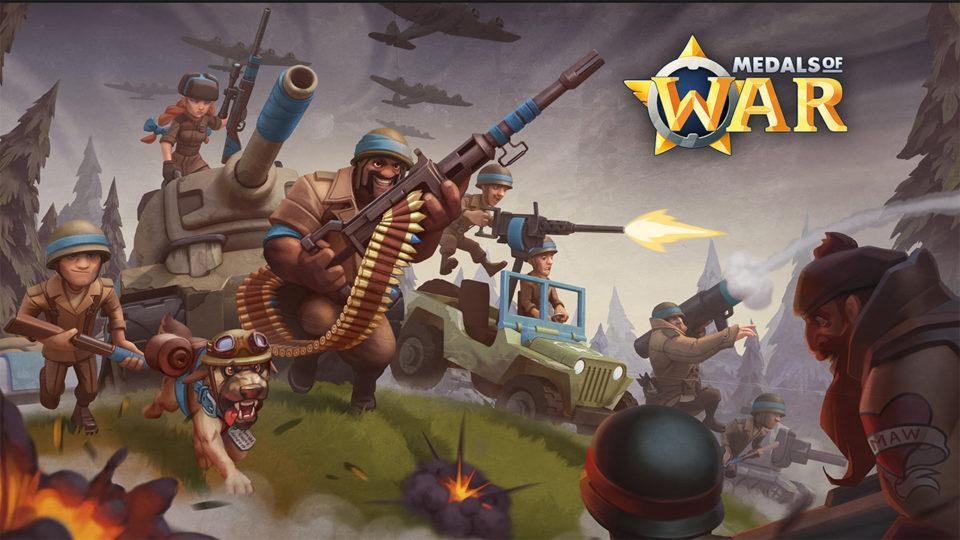Nitro Games was founded in 2007 – turning an impressive 10 years this year, and was listed to First North Stockholm in 2017. This is an amazing achievement for a company in a dog-eat-dog world of the gaming industry. Getting this far has required adapting to the changes in the games market: Nitro Games started as a PC and console games company, but moved to the mobile side of the moon in 2013. Nitro Games believes in agile development, creating fast MVPs to the app stores and developing the most well-received games towards perfection. They just launched their newest creation, Medals of War, which is now available in the App Store in 77 countries. We discussed with Simo Sylgren, Head of Design at Nitro Games about how GameRefinery’s service has helped the company during their fast development and upgrading cycles, and how Nitro Games has used it to point out feature trends in order to keep on adapting to market changes.
We discussed with Simo Sylgren, Head of Design at Nitro Games about how GameRefinery’s service has helped the company during their fast development and upgrading cycles, and how Nitro Games has used it to point out feature trends in order to keep on adapting to market changes.
”It is easy to fool yourself if you don’t use objective data”
Nitro Games started using the GameRefinery service in April 2017 when developing Medals of War (- and the GameRefinery consultation services already in 2014!). “I have to be honest: First I was sceptical about the GameRefinery service, but the clear feature- and implementation descriptions convinced me that it is super useful. After using it for several months I’m even more certain of this”, Simo admits with a smile.
“The GameRefinery service is amazing and unique, because it offers information that other analytics services simply cannot”, Simo explains. “You can analyse your game’s and concepts potential/strengths and weaknesses in a matter of days instead of waiting for the results of months’ worth of analysis data”.
Simo asserts that data and analytics are important, since they “remove hunches, and help prioritize features and their implementation in the correct order”. With the GameRefinery service a game developer can also “use other games and market trends as baselines to show what their players like”. As he claims, “it’s easy to fool yourself if you assume without using pure, objective data”.
Build fast, build strong using feature data
Simo explains that Nitro Games has used GameRefinery’s game analyzer tool to create mock-up-products to see how their ideas stand against the latest market trends. They have also compared them with other mock-ups and against competitor products. “Once you’ve created a concept that works, the GameRefinery service is also a good conversation-opener and tool to convince your team that the idea works based on objective data. It’s also easier to discuss and create schedules when you know which features need to be prioritized”, Simo describes.
A game consists of multiple parts, and Simo emphasizes that it is important to bring in the most important features first, so that the game is in a good state as soon as possible. “You have to consider that each month of development costs money,” he stresses. Nitro Games uses the GameRefinery service to see how important a specific feature is and how it affects the revenue potential of a game.
Simo finds it convenient that everything in the service is broken down into features, so a game developer doesn’t need to use an Excel or consultants during the design process. In addition, the service helps chop down features into manageable parts, so they are easier to build with less overall effort. Since features are connected to each other, Nitro Games uses the GameRefinery service as a checklist to make sure that they have all the related features in the game. “For example, a multiplayer and PvP-focused game needs to have a chat. Other support features also need to be considered”, Simo explains.
He also notes that “with the time constraints it’s dangerous to just jump into the rabbit hole, and hone one feature endlessly, if its effect on the Powerscore is minimal”. “It is paramount to prioritize features that you need to polish and know when it’s time to move into something completely different, whether it’s during development or when updates are introduced to the game”, Simo explains.
“I find it amazing how the forecasts of the GameRefinery service and Powerscore system have come true, so now I’m a believer”, Simo states.
Keep up with the industry standards and competition using feature-level data
“We began by comparing our visions to the industry standards”, Simo explains and adds that “we look at the Powerscores of our competitors and compare it to ours to see whether we are even on the same playing field with them.” Simo finds it pragmatic that the Powerscore includes publisher strength: ”With the Powerscore we can take into account differing marketing budgets, so we can acknowledge where our game stands. This keeps our expectations realistic and feet on the ground”.
Nitro Games has also used the game comparison tool to see which features competitors’ games have: “We investigate whether we have that feature, whether it is not implemented on purpose or whether we have overlooked something important”, he says. The game comparison tool has also given information on how a specific feature has been implemented in a competitor’s game. “We try to find out what sorts of things we can reflect upon. However, we do realize that the exact same recipe a competitor has used may not work with our game, so the GameRefinery service can also help distil new ideas.”
“This service is not only good for the underdogs out there, but as a market leader you can follow how the market situation unfolds”, Simo argues, “It’s important to know how your competitors are catching up on you and what sorts of trends are appearing on the market, even if you’re successful”.























